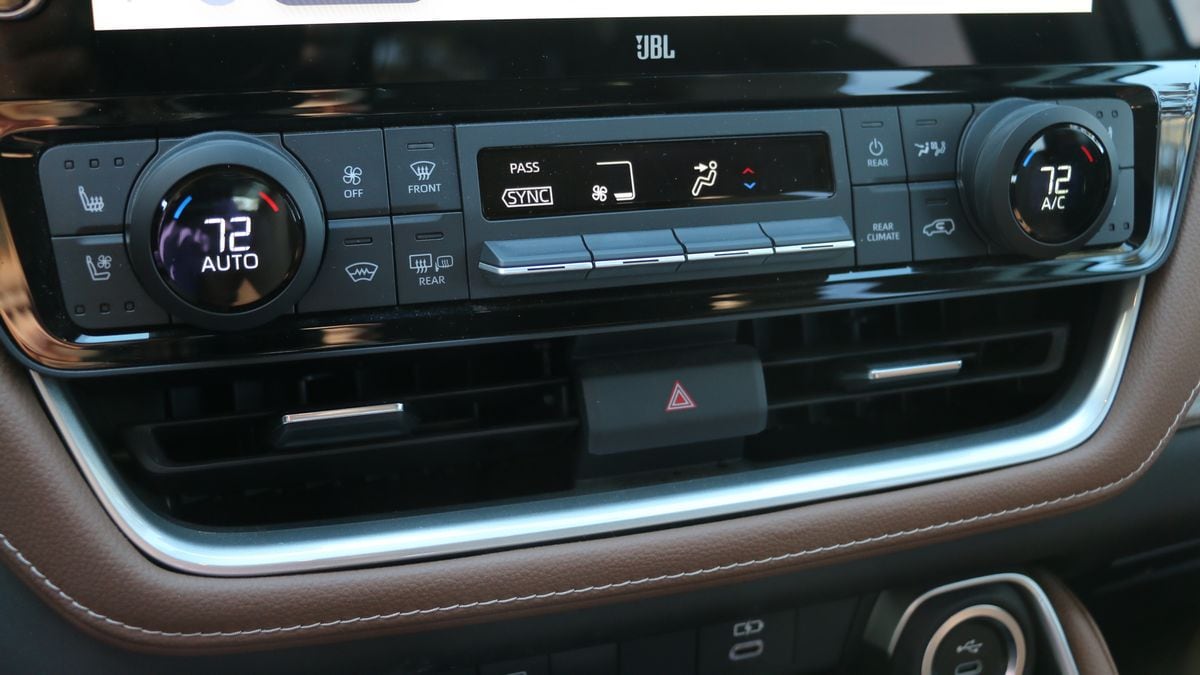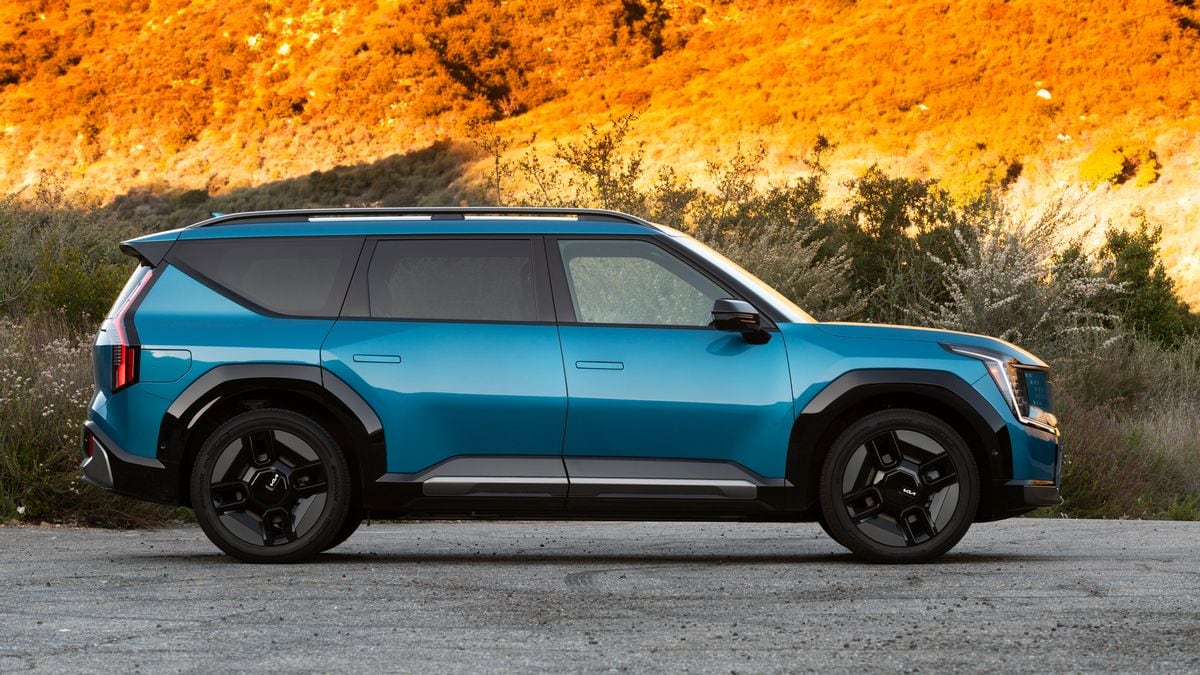Quick Facts About Tesla Maintenance
- Mobile service providers perform routine Tesla maintenance, but the carmaker does not have service centers in every state. GM began servicing Teslas in the last few years.
- The cost to maintain a Tesla is slightly higher than many gasoline cars.
- According to Tesla, owners must lubricate the brake calipers annually in states that use road salt in winter.
Maintaining a Tesla seems simple enough, according to one promise of the electric vehicle revolution. After all, having fewer mechanical parts in the car means you don’t have the expense and inconvenience of oil changes, transmission fluid replacements, or coolant flushes.
Tesla, America’s best-known EV maker, is doing the most to spread the message of easy maintenance and less-expensive routine service costs. Still, keeping a Tesla on the road isn’t free, and service centers aren’t as common as regular auto shops. Continue reading for insight into Tesla maintenance.
How Much Does Maintaining a Tesla Cost?
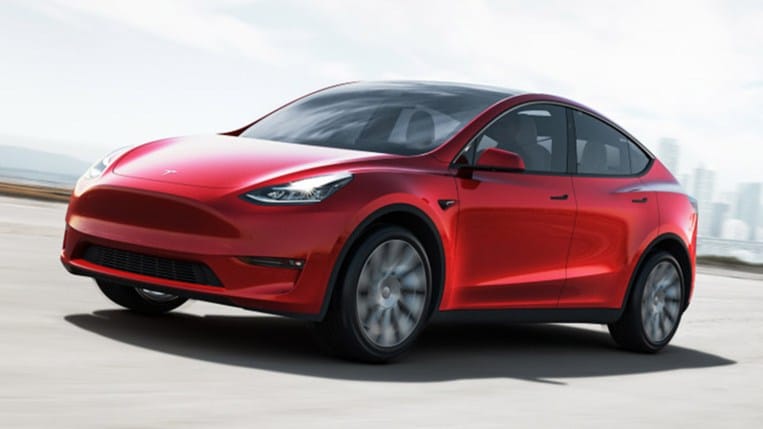
Our experts found that over five years, the owner of a Tesla Model 3 can expect to spend an estimated $3,115 on maintenance, or $623 annually. That’s slightly higher than many gas-powered competitors. For example, maintenance for the Genesis G70 costs $2,621 over five years.
But Tesla’s fuel savings more than made up for the added cost. Keep in mind that some costs can add up for maintenance. For example, EV tires wear faster due to the extra weight of the batteries and need to be replaced more frequently than tires on traditional gasoline cars.
Also, older vehicles may experience additional maintenance and repair costs over time. For example, one Reddit user cites a cost of $3,631 to replace one headlamp in a 2014 Model S.
Can You Maintain a Tesla Yourself?
Some items on Tesla’s routine maintenance schedule are simple enough for a competent home mechanic to perform. For instance, replacing the cabin air filter every two years is easy with minimal experience.
Other tasks, including testing brake fluid for contamination, require shop tools most of us don’t have.
Still, every new Tesla comes with a bumper-to-bumper and a battery warranty. Depending on the model, the battery warranty length can vary from either eight years or 100,000, 120,000, or 150,000 miles. The bumper-to-bumper warranty is four years or 50,000 miles.
MORE: Are All Tesla Cars Electric?
Where To Go for Tesla Maintenance
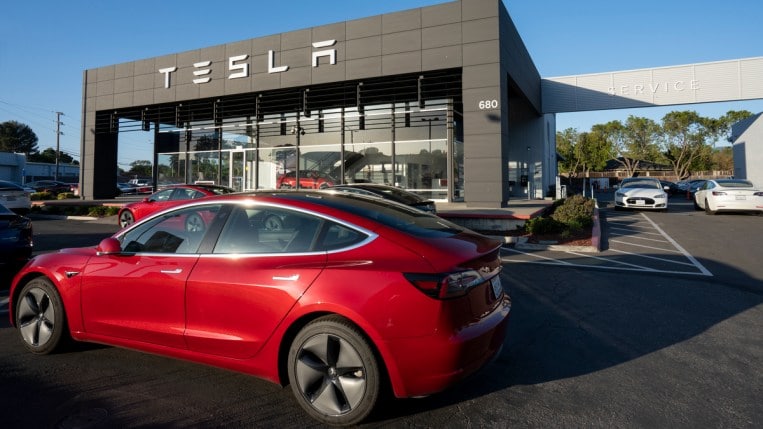
Tesla employs a fleet of mobile service providers. They’ll come to you wherever your Tesla is parked to perform routine maintenance. These include tire rotations, cabin air filter changes, and other basic tasks.
Tesla maintains a network of service centers for less common and more extensive work. The company operates service centers in at least 35 states as of this writing. However, that doesn’t mean they’re all conveniently located. Ease of access varies widely based on where you live. California residents can use 39 service centers across the state. If your Tesla experiences a problem in Idaho, you must go to Boise.
There’s another solution for drivers who don’t live near a Tesla service center. GM began servicing Tesla vehicles in the last few years. GM estimates that 90% of Americans live within 10 miles of their dealerships.
Can You Take Your Tesla to a Regular Auto Shop?
Few independent service shops currently have technicians certified to work on electric cars. That will likely change in the coming years as electric vehicles make up a more significant portion of the cars on American roads. But, at the moment, most independent shops don’t work on Tesla vehicles.
Tesla also notes, “If you choose to take your vehicle to a non-Tesla shop for maintenance or repairs, coverage under your warranty could be affected if any problems occur.”
RELATED: How Long Does It Take to Charge a Tesla?
Routine Tesla Maintenance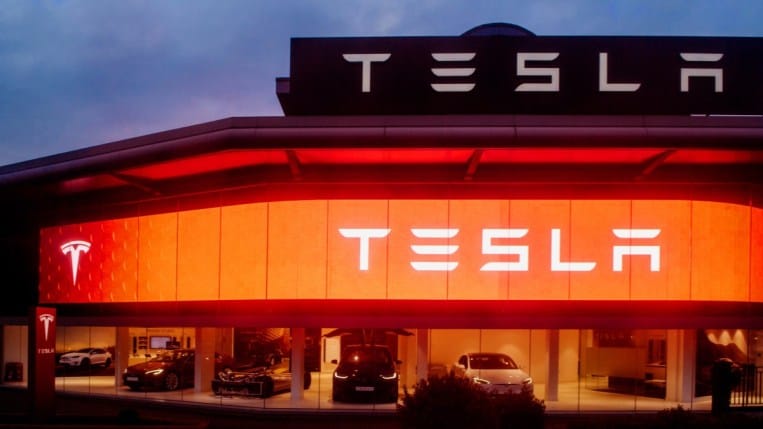
Tesla vehicles use batteries and maintenance-free electric motors. Those take the place of the engine, fuel system, and transmission in a gasoline-powered car — parts that are the source of most maintenance needs.
Like other electric cars, Teslas use a suspension system, tires, brakes, and other parts similar to vehicles with internal combustion engines. These parts still need routine maintenance.
The battery mentioned above is the one providing power to the vehicle’s propulsion motor. However, electric cars also have a 12-volt battery to operate accessories, including door locks. In a Tesla, the 12-volt battery must keep its charge because the vehicle uses a button instead of traditional door handles to open the doors from the inside. If that battery dies and the locks aren’t working, you’ll need to open the doors using a mechanical release in front of the window switches. Although the occurrence is infrequent, ensure the 12-volt battery is holding its charge to avoid the unsettling feeling that comes when your door doesn’t immediately open as expected.
Do Teslas Require Unique Maintenance?
Tesla vehicles also require some unusual maintenance services because of their unique nature. For instance, regenerative braking uses resistance from the electric motor to help slow a Tesla. This function means drivers rely less on brakes. Therefore, brake pads tend to last longer in a Tesla than in a gas-powered car.
However, Tesla requires owners to lubricate the brake calipers annually in states that use road salt in the winter. In addition, many Tesla owners have shared anecdotes suggesting that a Tesla’s tires need replacement before their predicted lifespan ends. Tires advertised to last 40,000 miles can last just 30,000 miles on a Tesla. The increased wear could be because EVs weigh more than gas-powered cars. Another cause may be the instant torque of their motors provides high-friction starts.
What Maintenance Do Tesla Owners Get To Skip?
Because Teslas lack traditional engines and transmissions, regular tasks like oil changes and coolant flushes are unnecessary.
MORE: Tesla Dual Motor Basics: What You Need To Know
Owner Satisfaction With Tesla Maintenance
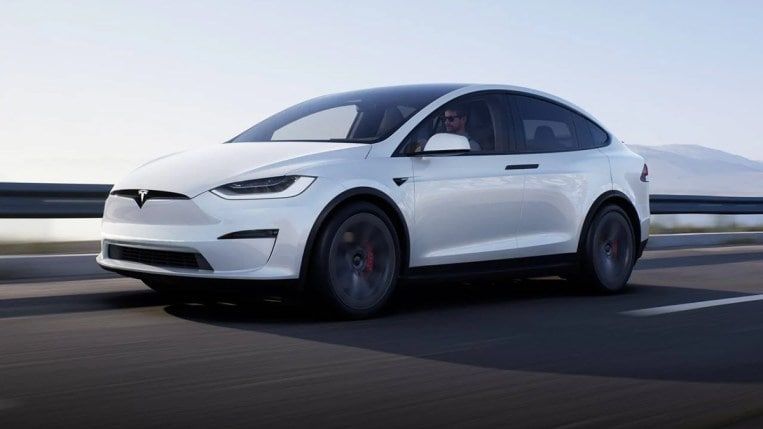
Tesla sales have snowballed, but its network of service centers has not grown as quickly. Consequently, many Tesla owners have complained of long wait times for service appointments, even as GM assists the carmaker.
Parts shortages also plague the auto industry, and Tesla is not immune.
According to the National Highway Traffic Safety Administration (NHTSA), Tesla experienced 14 recalls in 2023, potentially affecting more than 2.5 million vehicles. In February 2023, Tesla recalled about 362,760 vehicles equipped with “Full Self-Driving Capability” software after the National Highway Traffic Safety Administration (NHTSA) warned that it was unsafe. In December 2023, Tesla recalled more than 2 million vehicles because of an increased risk of crashing due to insufficient controls to prevent misuse of the Autosteer feature.
In February 2024, Tesla issued a recall for nearly every vehicle it has ever sold because the safety warnings they display are smaller than federal law allows.
Read more about Tesla recalls and use our recalls resource tool for additional information.
RELATED: Tesla Has The Most Loyal Owners, Study Finds
Tesla Recommended Maintenance Schedule

Tesla publishes a recommended maintenance schedule for some services. It does not cover wear items like wiper blades, tires, and brake pads, which must be inspected at every service appointment and replaced as necessary.
| Service | Interval |
| Replace Cabin Air Filter* | Every 2 years (Model 3, Model Y)Every 3 Years (Model S, Model X) |
| Rotate Tires, Align Wheels | Every 6,250 miles |
| Test Brake Fluid, Replace If Needed | Every 2 years |
| Replace Air Conditioning Desiccant Bag* | 6 years (Model 3)4 years (Model Y)3 years (Model S, Model X) |
| Replace HEPA Air Particulate Filter | Every 3 years |
| Clean and Lubricate Brake Calipers | Every 12 Months or 12,500 miles in regions that use road salt |
Source: Tesla
*Times may vary depending on the model year of your vehicle.
Read Related Articles:
Editor’s Note: This article has been updated for accuracy since its original publication.



